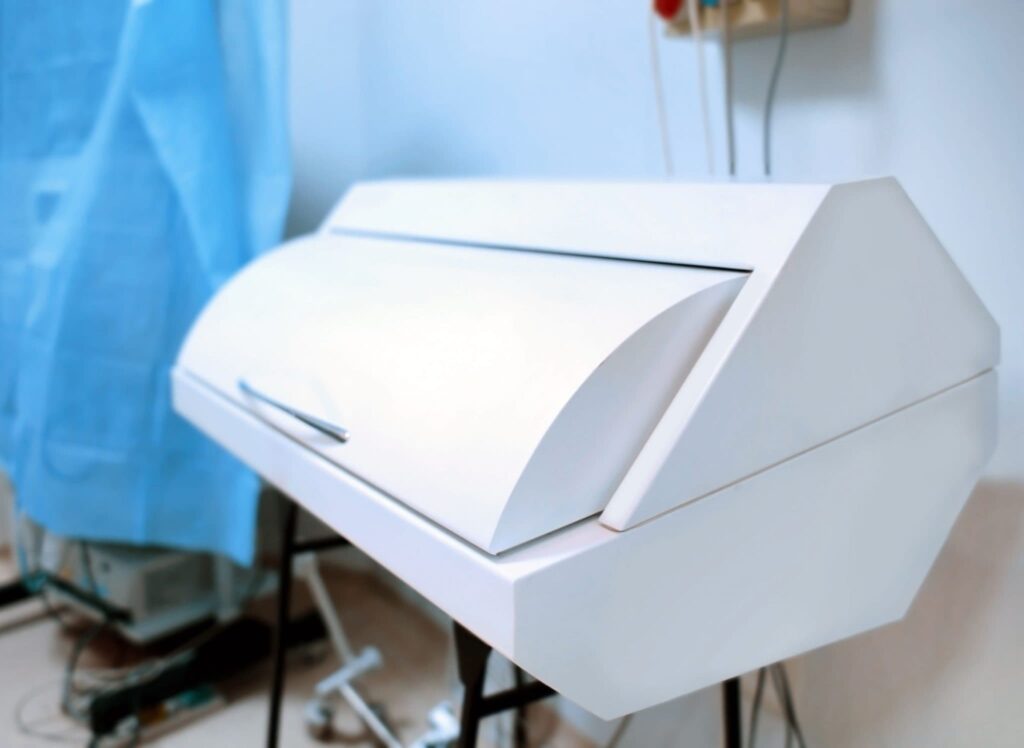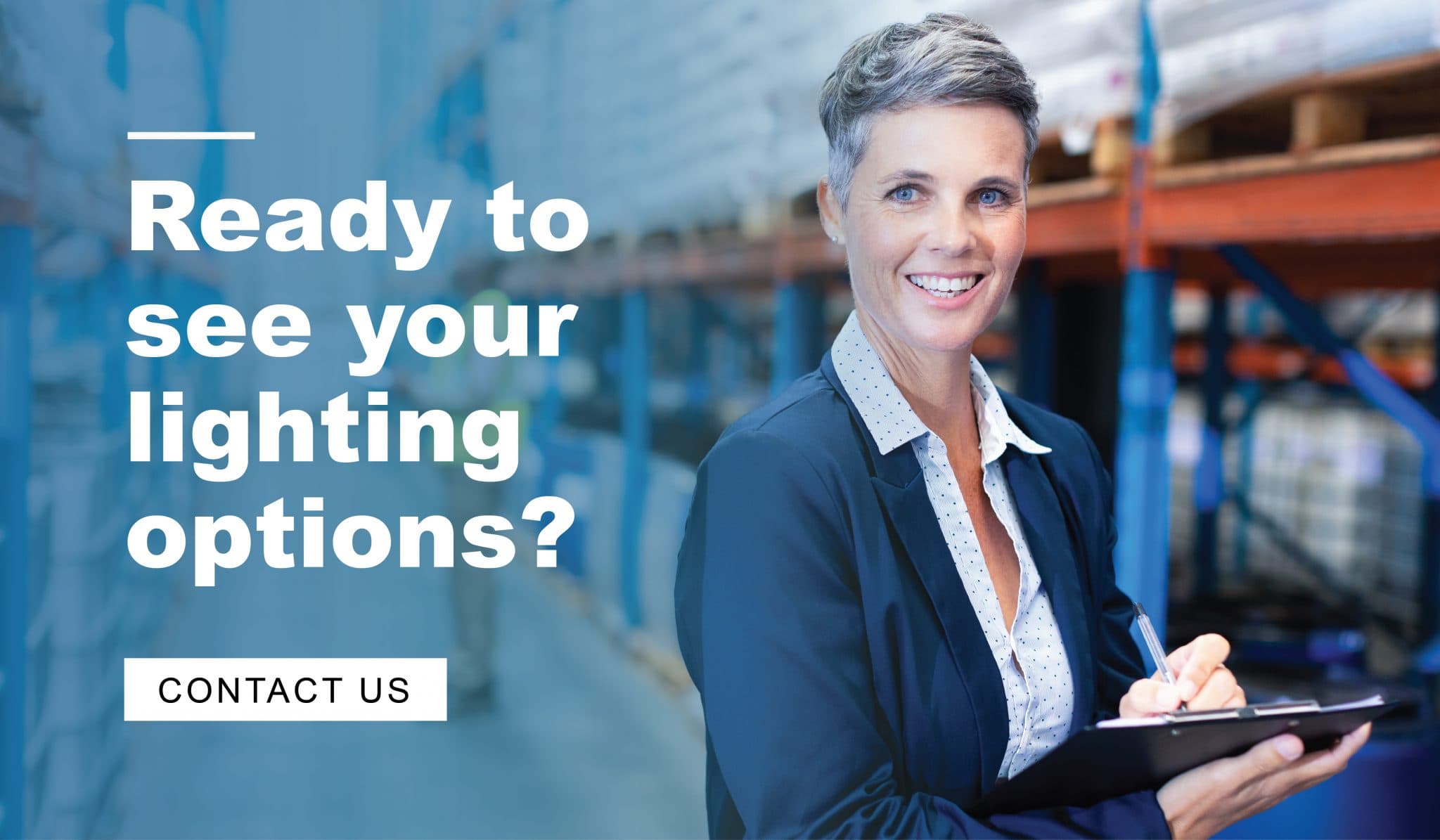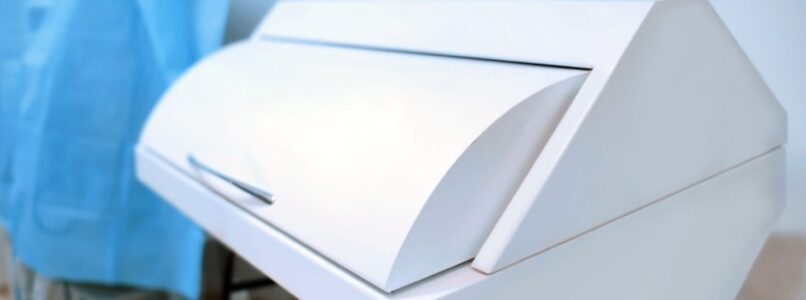UV-C Light Sanitation for COVID-19 & Beyond

The cleanliness of the air we breathe and the surfaces we touch have a major impact on our health. And we’ll all come into contact with germs, especially in offices, restaurants, airports, and other busy places. This is on our minds more than ever before, even as more people receive the COVID-19 vaccine in an effort to slow the spread of the virus.
A solution that might surprise you: Disinfectant lighting, specifically UV-C radiation, that can keep viruses like SARS-CoV-2 (which causes COVID-19) from multiplying on surfaces.
Read on to learn about the benefits, limitations, and opportunities of UV-C light sanitation for inactivating COVID-19 and other viruses.
Ultraviolet (UV) Rays
Ultraviolet (UV) rays are invisible to our eyes; they’re between visible light and X-rays on the electromagnetic spectrum. There are three types of UV rays: UV-A, UV-B, and UV-C. Two kinds (UV-A and UV-B) are responsible for sunburns, premature wrinkling, and skin cancer.
UV-C’s wavelength is too short to pass through Earth’s atmosphere and reach our skin, so we can’t be exposed to UV-C simply by sunbathing. Scientists have been able to recreate UV-C radiation in a light bulb, and while direct contact with this light can still hurt our skin and eyes, it’s an effective way to inactivate viruses when applied safely (and away from humans’ eyes and skin).
UV-C Light Sanitation
Benefits & Opportunities
UV-C radiation is a known disinfectant for air, water, and surfaces that can reduce the risk of spreading viruses and infection. UV-C light sanitation doesn’t kill the virus, but it does make it unable to reproduce.
On the electromagnetic spectrum, UV-C radiation ranges from 100 to 280 nanometers (nm). Research has found that UV-C degrades the genetic material of viruses and bacteria at an exposure of 254 nm, so they can’t multiply. When you correctly install a UV-C lighting solution, you can operate it with people present, as the device will have a shield to protect our eyes and skin from radiation.
UV-C light sanitation will benefit offices, gyms, stores, and more in the long run. Besides reducing COVID-19 infectivity, the disinfectant works against other viruses, like the seasonal flu. It may also help us better protect ourselves from viruses we don’t even know about yet — and outbreaks we’ll experience in the future.
Limitations & Risks
There are a few limitations to UV-C light sanitation, including:
- Direct exposure: A virus must be directly exposed to UV-C radiation to be prevented from spreading. Trying to inactivate viruses on surfaces may not be effective if soil, dust, or other contaminants on the surface block the radiation.
- Dose and duration: Many UV-C lamps intended for home use are low dose, so they may take longer to inactivate bacteria or viruses on a surface. A higher-dose UV-C lighting solution (such as those used in hospitals) will be more effective at keeping pathogens from spreading.
And as we mentioned above, UV-C radiation should never come into contact with your skin or eyes, as this could increase your risk of skin cancer or cataracts (just like exposure to UV-A and UV-B rays from the sun can do). This is especially true for any UV-C light sanitation that has a wavelength of 254 nm or more.
One way that manufacturers have worked around this issue is by installing UV-C solutions within air ducts for disinfected ventilation. This is one of the safest methods of disinfecting the air because it’s much less likely to cause exposure to our skin and eyes.
UV-C Lighting Solutions
There are several types of UV-C lamps (or germicidal lamps). Some lamps emit a specific wavelength (like 254 nm), while others release a broad range of UV wavelengths. Still others emit visible and infrared radiation along with UV-C light.
A few types of UV-C lamps and lights you’ll find include:
- Low-pressure mercury lamps: Historically, this has been the most common type of UV-C lamp, with a main emission of 254 nm. Some low-pressure mercury lamps emit a range of wavelengths, while others release visible and infrared light.
- Excimer lamps or far-UV-C lamps: These lamps have a peak emission of 222 nm. You can safely use this light to inactivate viruses, bacteria, and other pathogens while people are present in the space.
- Pulsed xenon lamps: These lights release a short pulse of broad-spectrum radiation, including UV-C, visible, and infrared light. Pulsed xenon lamps are sometimes used in hospitals to disinfect surfaces, especially in operating rooms. They’re often activated when no humans are in the space to avoid directly exposing them to potential skin and eye damage.
- Light-emitting diodes (LEDs): LEDs that emit UV-C radiation are becoming more available. They typically release a narrow wavelength range, with peak wavelengths at 265 nm, 273 nm, and 280 nm. While they cover a smaller surface area and have a higher directionality, LEDs with UV-C radiation don’t contain mercury — and they’re more environmentally friendly than other lighting solutions.
Questions for Your Manufacturer
When exploring your options for UV-C light sanitation for your office, school, church, or another application, you should ask your lighting manufacturer:
- What UV-C lighting solutions they offer (or are in the process of researching and developing)
- What the product’s health and safety risks are
- If the product has safeguards, such as motion detection sensors or timers
- What the installation and usage instructions are — and whether they provide training for proper operation
- What the product’s environmental impact is
- Whether the lamp contains mercury (and how to clean up or dispose of the lamp if it’s damaged)
With people going back to the office, eating in restaurants again, and simply getting out and about more, manufacturers are looking for better ways to protect their customers from harmful pathogens. UV-C radiation can help them do just that, with its unique ability to disinfect and keep viruses from spreading.
While we don’t offer UV-C light sanitation products yet, we’re encouraged by early study results and look forward to the opportunity to provide even more lighting options that will help manufacturers better serve their customers.

********************
Since 1971, Vista has helped manufacturers gain a competitive advantage by merging quality and innovative lighting products with cost-effective pricing and on-time delivery. To learn more, please contact us or connect with us on LinkedIn.


